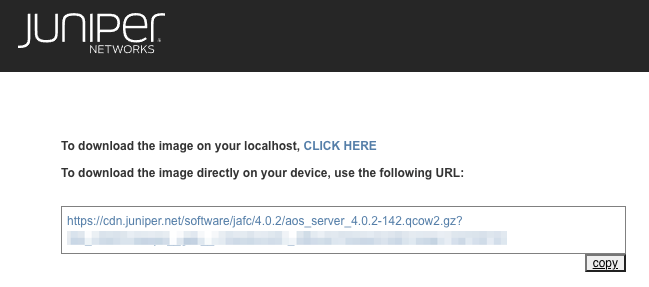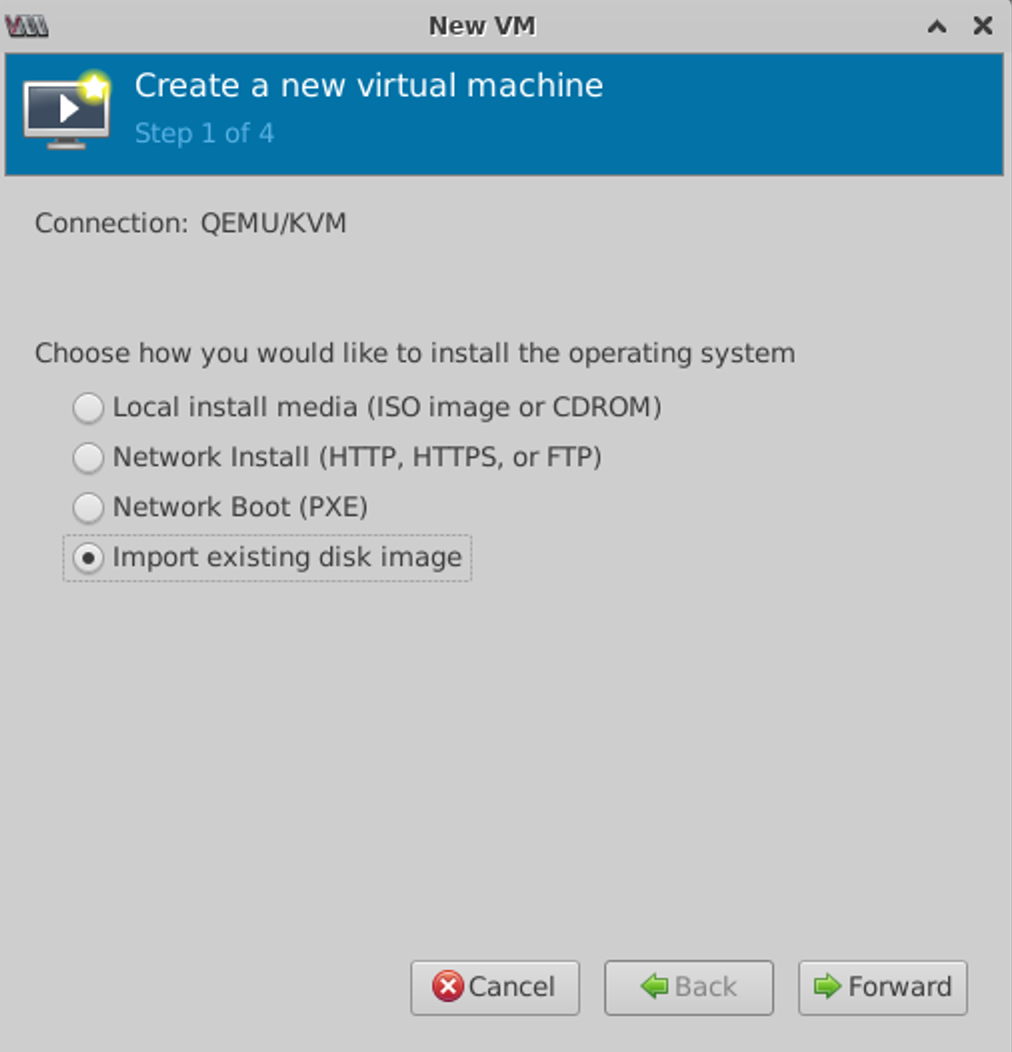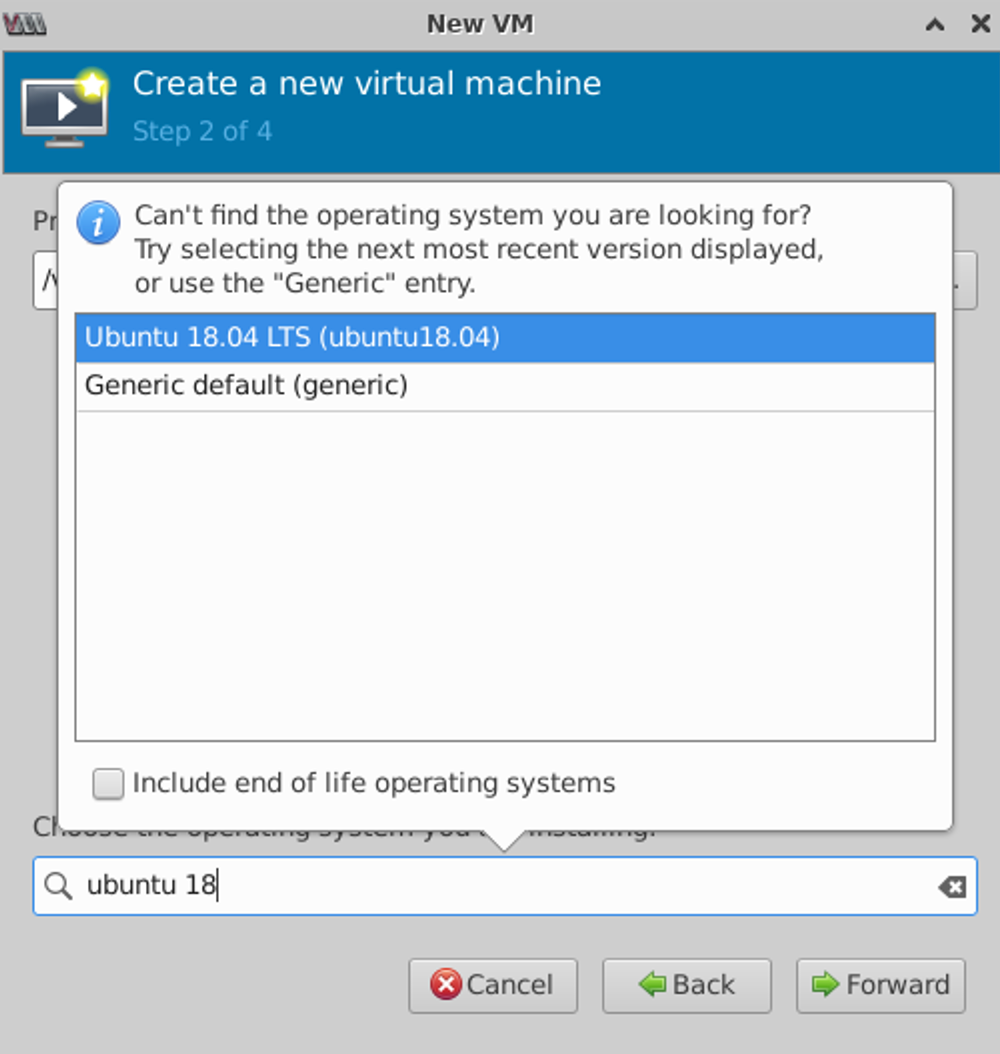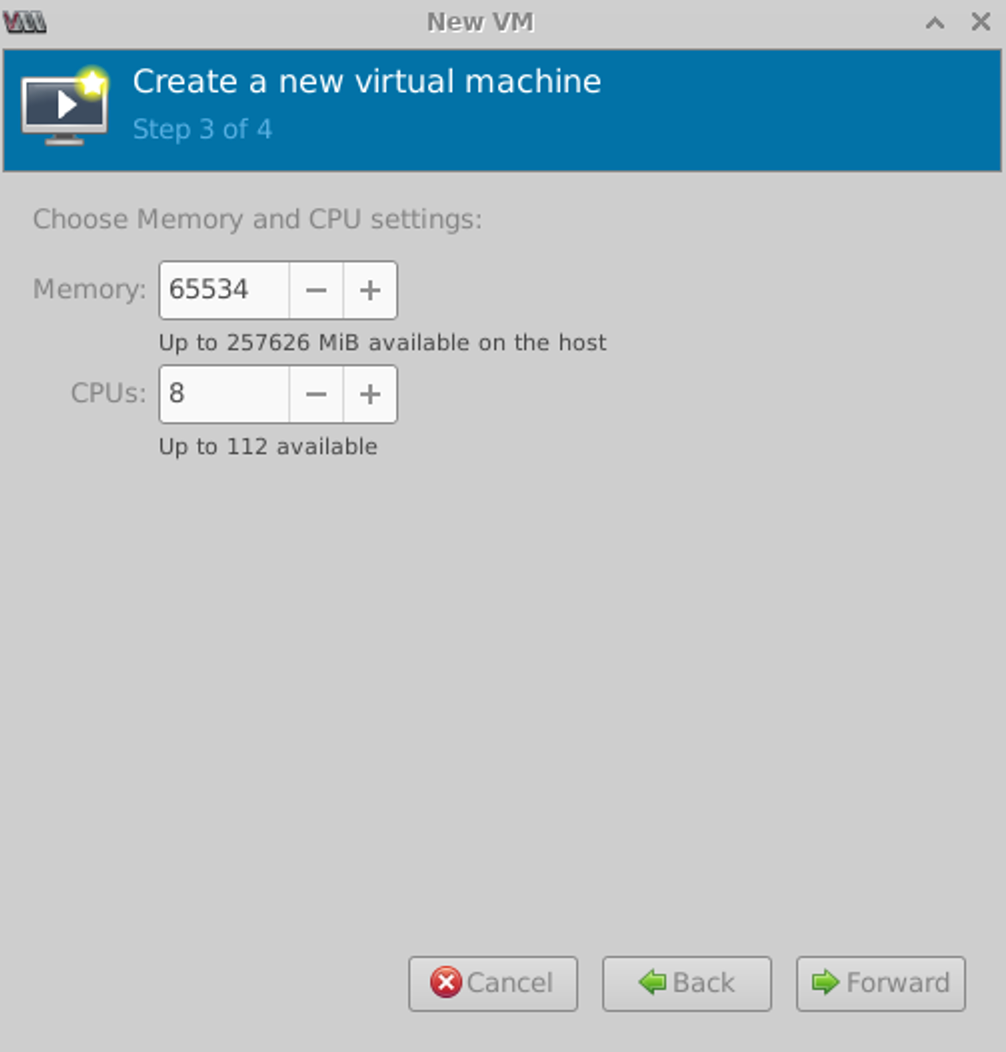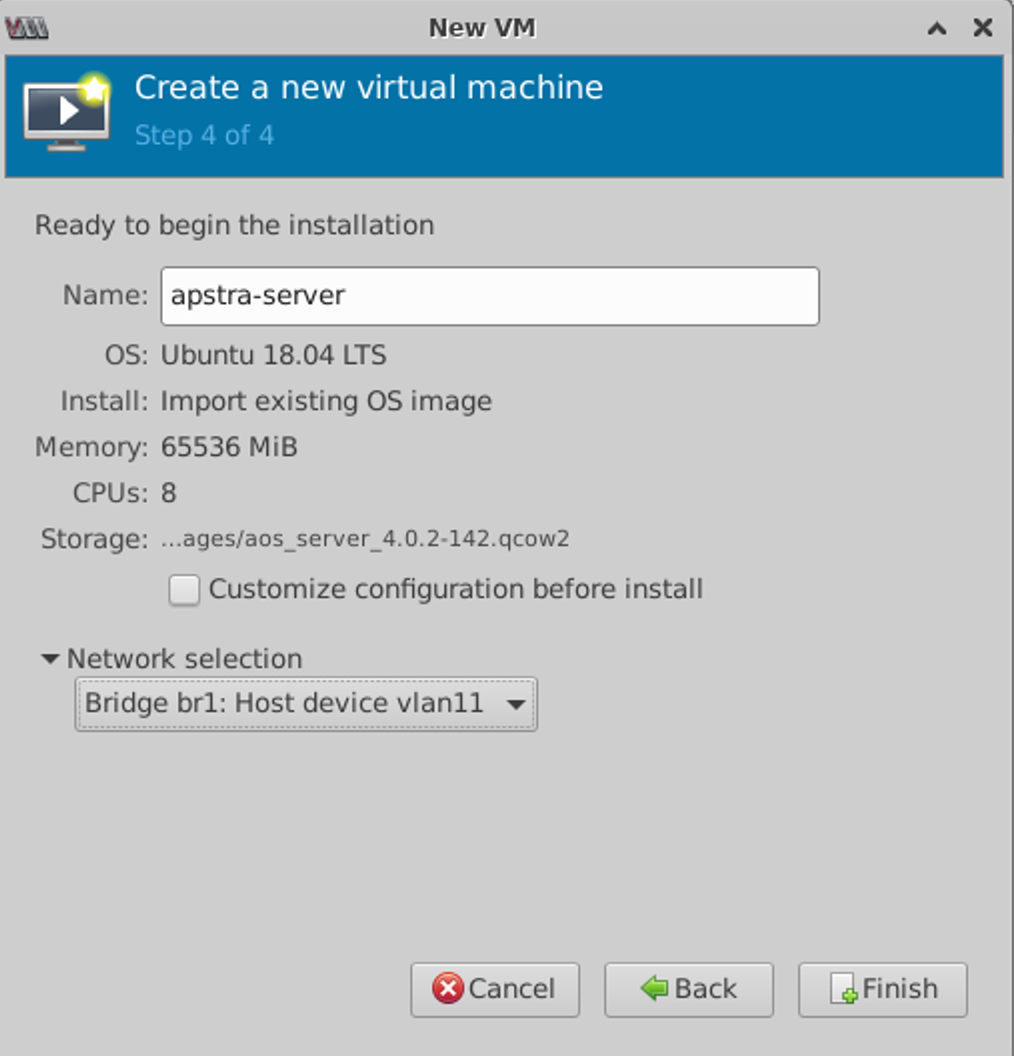Install Apstra on KVM
You can install KVM with Virtual Machine Manager or with the CLI.
These instructions are for installing Apstra software on a KVM hypervisor. For information about using KVM in general, refer to Linux KVM documentation.
Install on KVM with Virtual Machine Manager
You're ready to Configure the Apstra server.
Install on KVM with CLI
You're ready to Configure the Apstra server.





















